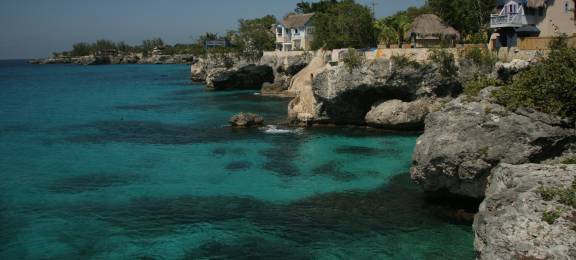Negril Crafts Market (betwen the Negril Beach park and the river) has a wide variety of crafts, some better and more authentic than others. Sadly, an increasing production of the products on sale are made in china rather than locally produced.

Call or email for assistance planning your trip: +1 (212) 203-0064 | reservations@moonjamaica.com
Negril Crafts Market (betwen the Negril Beach park and the river) has a wide variety of crafts, some better and more authentic than others. Sadly, an increasing production of the products on sale are made in china rather than locally produced.
Bongo Johnson makes beautiful art sculptures, which can be seen by special arrangement. Johnson's delicate lignum vitae sculptures are on exhibit at the National Gallery in Kingston. He could be convinced to sell a piece if the price is right.
One Stop Branzo Wood Sculptures is located on the beachfront at Wavz Entertainment Centre (8 a.m.-8 p.m daily). Abdel, a.k.a. Branzo, is a talented wood carver and also sells the work of many local peers in his beachside shop.
Natural Vibes Souvenir Shop (8 a.m.-7 p.m daily) has been run by Haresh "Hassle Free Harry" Pahilwani since 2004 and is known for hassle-free shopping for Cuban cigars, Jamaica T-shirts and sweats, sandals, sunglasses, Rasta hats, and smoking paraphernalia.
Errol Allen is a talented local artist who makes unique silhouette sculptures and oil paintings. Allen's sculptures can be seen on the grounds of Whistling Bird.